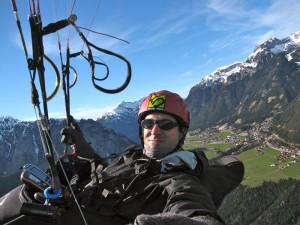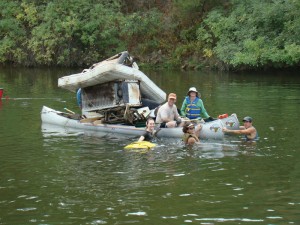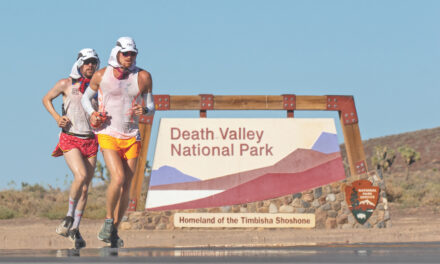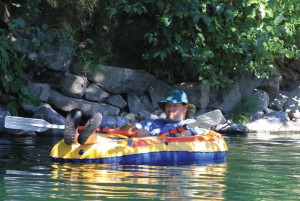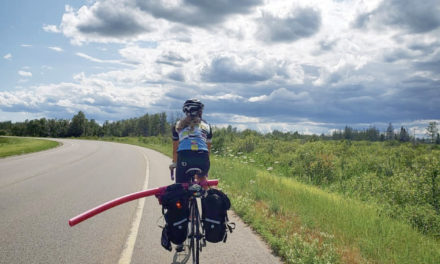- Tahoe’s Nevada Beach Tops the List of Hard-to-Book Campgrounds - 07/17/2024
- Cannabis Watershed Protection Program Cleans Up Illegal Grow Sites - 07/10/2024
- French Fire - 07/05/2024
>> NPS Releases Historic Policy Authorizing Fixed Anchors in Wilderness
After decades of work by the Access Fund, the National Park Service (NPS) announced in May that the agency has issued final national policy authorizing fixed anchors in wilderness. This policy—Director’s Order #41—affects many of the country’s most important climbing areas, such as Yosemite, Grand Teton, Zion, Joshua Tree, and Canyonlands National Parks.
The NPS included many of the specific provisions the Access Fund advocated for during their 20+ years of work on this issue, such as programmatic authorizations (which allow new bolts by zone, not just case-by-case permitting for individual routes/bolts) and interim fixed anchor permitting prior to the establishment of dedicated climbing management plans. The new policy is still being analyzed, but first impressions are that this direction is good for both wilderness climbers and NPS managers.
Go to www.accessfund.org to see a copy of the new policy and to also stay tuned for more in-depth analysis.
—————————————————————————————————————————————————————————————————
>> LOWA Renews Partnership with Sierra Club
LOWA Boots has renewed their partnership with the Sierra Club and Sierra Magazine to run a Demo Center out of the flagship Clair Tappaan Lodge, on top of Donner Pass. Hikers will once again be able to enjoy a day hiking the surrounding trails in LOWA boots at no charge. For every subsequent questionnaire filled out, LOWA makes a donation to the Sierra Club’s initiative to upgrade the lodge and take it off the grid. The center opened over Memorial Day weekend and will stay active until Columbus Day.
“The Demo Center will allow consumers to try at no charge before they buy,” commented Peter Sachs, general manager of LOWA in the U.S. “Our goal is to help potential customers realize the benefit of top quality footwear designed specifically for the terrain as opposed to the casual or basketball-type shoes frequently seen on the trails. Hikers will have more fun, enjoy better support and comfort and thus be inspired to continue enjoying the outdoors. At the same time, we can contribute to the Sierra Club’s goals for the Lodge. It’s a win-win.”
Clair Tappan offers a network of nearby trails. The Pacific Crest Trail is only a mile away and can be reached right out the back door of the lodge.
—————————————————————————————————————————————————————————————————
>> Tahoe Paraglider competes in Red Bull X-Alps
On July 7, Tahoe resident Stephan Haase and 30 other invited international athletes will compete in possibly the toughest adventure race ever designed, the 2013 Red Bull X-Alps. The race concept is simple with an engaging sequence of events—athletes will race in two modes only, paragliding or hiking from Salzburg to Monaco, along a series of iconic peaks including the Matterhorn and Mont Blanc. With a straight-line distance of more than 600 miles, it’s an intriguing challenge in an unforgiving environment.
Stephan will be supported in his race by fellow California paragliders Dave Hanning and Brad Sander, who will meet him at checkpoints along the way with food, water, and weather strategy. Together they comprise Team USA2, one of only two teams from the US invited to compete. The X-Alps race will require all of Stephan’s experience as an expert pilot, alpine climber, and backcountry skier, as well as a wealth of emergency management skills gained as a firefighter.
Describing the race, Stephan had this to say, “In a single day it is possible to fly more than 150 miles in about seven hours.” After landing, the real adventure for Stephan begins, crossing glacier fields and hiking 4000 meter mountains to reach another launch-point for the glider. Athletes race from 05:00 to 22:30 each day until reaching Monaco.
Once underway, the progress of each competitor can be followed live at the Red Bull website. “The live tracking is addictive even if you know nothing about paragliding. You can watch everything unfold in real time and even be part of the drama by sending messages to athletes,” said Haase.
Follow Team USA2 on Facebook, at www.facebook.com/RedBullXAlpsTeamUSA2.
—————————————————————————————————————————————————————————————————
>> Great Sierra River Cleanup
The Fifth Annual Great Sierra River Cleanup will take place throughout the Sierra Nevada on Saturday, September 21. The Great Sierra River Cleanup is an annual volunteer event focused on removing trash and restoring the health of watersheds throughout the Sierra Nevada Region. This statewide effort—coordinated by the Sierra Nevada Conservancy, in conjunction with the California Coastal Cleanup Day—serves to promote good stewardship on all of our waterways, from the source to the Pacific Ocean.
During the first four years of the Great Sierra River Cleanup more than 14,700 volunteers joined together to remove over 550 tons of trash from watersheds throughout the Sierra Nevada. Hundreds of community groups have spread across 22 counties and 1,280 river miles to pull appliances, cigarette butts, beverage cans, baby diapers, tires, furniture, and more from the rivers and streams that supply the State of California with 65 percent of its water.
This annual event is more than just picking up trash. It’s a day for local communities and the visitors who love the Sierra to demonstrate their desire for clean water and healthy rivers. It’s an opportunity to learn about the importance of Sierra Nevada watersheds and the benefits they provide. It’s about bringing together families, neighbors, visitors and friends in a gorgeous setting to accomplish something significant and worthwhile on behalf of our environment.
There are river and creek cleanup locations throughout the Sierra Nevada from the southern Kern and Kings Rivers, over to numerous locations on the east side, up to Sacramento River tributaries and Modoc County locations to the north. Log on to the State of California’s Sierra Nevada Conservancy website to find a cleanup location near you: sierranevadaconservancy.ca.govour-work/rivercleanup.
—————————————————————————————————————————————————————————————————
>> Permit Denied for Tahoe Sierra 100 MTB Race
Chris Fischer, the current district ranger for the United States Forest Service, American River District, Foresthill CA, has denied the permit for the 7th Annual Tahoe Sierra 100 Mt Bike Race. The Western States Trail, where the race is held every year, is traditionally a multi-use trail. Other iconic events that take place on the Western States Trail include the Western States 100 mile ultramarathon, and the Tevis Cup horse race.
Bikes have traditionally been allowed on the Western States trail, and the permit denial has everything to do with an accident that occurred during last year’s race.
During the 2012 TS 100, equestrian Crystal Costa was thrown from her horse after encountering mountain bike competitor Jon Hyatt near mile 85 of the race. As a result of this encounter, Costa’s horse Sam spooked and threw her to the ground. Among other injuries received, Costa broke her back and was flown to the hospital.
According to Hyatt and other witnesses, the horse became spooked at the sound of a skidding bike tire and a shoe unclipping from a pedal. Hyatt stayed with Costa until help arrived. Costa has maintained that the encounter was an unfortunate accident and Hyatt did nothing wrong.
Northern California cyclists are concerned that the permit denial will lead to general restrictions along the Western States trail.
At press time, TS 100 race director Jim Northey is meeting with the USFS and equestrian groups to try to reach a compromise.
“A lot is at stake here. If mountain bikers are banned from this trail it will be one of the first decisions of its kind that involves restricting access for a user group that has been using a trail for over thirty years,” Jim told ASJ editor Matt Niswonger.
—————————————————————————————————————————————————————————————————
>> San Clemente Dam will be torn down
Monterey County supervisors gave their OK for the largest dam removal project in state history. The San Clemente Dam is eighteen miles from the coast in the Carmel Valley.
The 90-year-old, 106-foot-tall dam was once a major source of water on the Monterey Peninsula, but it has reached the end of its useful life.
“The dam was deemed to be seismically unsafe in 1995,” said California American Water spokesperson Catherine Bowie. She added that, “as the water provider we had to do something to resolve that safety issue.”
So the company set out on a plan to retrofit the dam.
“But then the natural resource agencies from the state and federal levels stepped in and said, we want to do more than solve the safety issue by reinforcing the dam with concrete, we want to see if we can actually remove the dam,” said Bowie.
Tearing down a dam isn’t simple. You can’t just knock it down and let the water go. That’s because sediment from upstream has backed up behind the dam. It would take 250,000 dump trucks to haul away all the silt behind this dam. Just letting it flow downstream may harm endangered steelhead trout that use the river to breed. The species is already on the verge of vanishing from the Carmel River.
Joyce Ambrosius with the National Marine Fisheries Service has spent the last 15 years waiting for the dam to come down. She says the dam removal can’t come soon enough. “Right now the fish have to come up a very steep fish ladder. Some of the steps are three feet tall, and only the strongest fish can make it up just to get past the dam.” Tearing the dam down may open the way to steelhead recovery.

